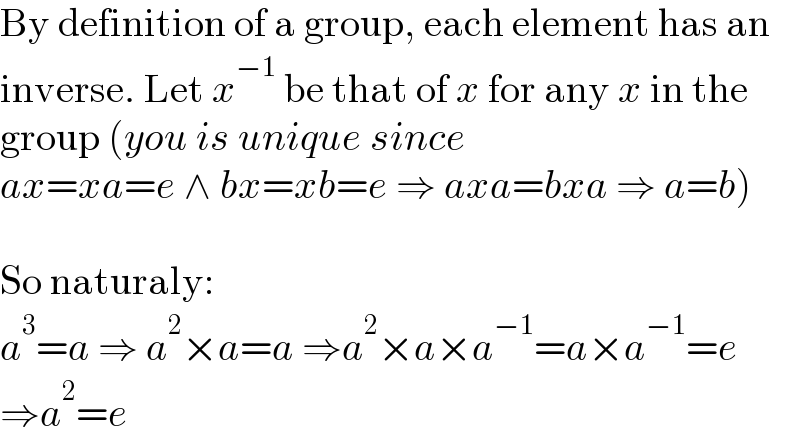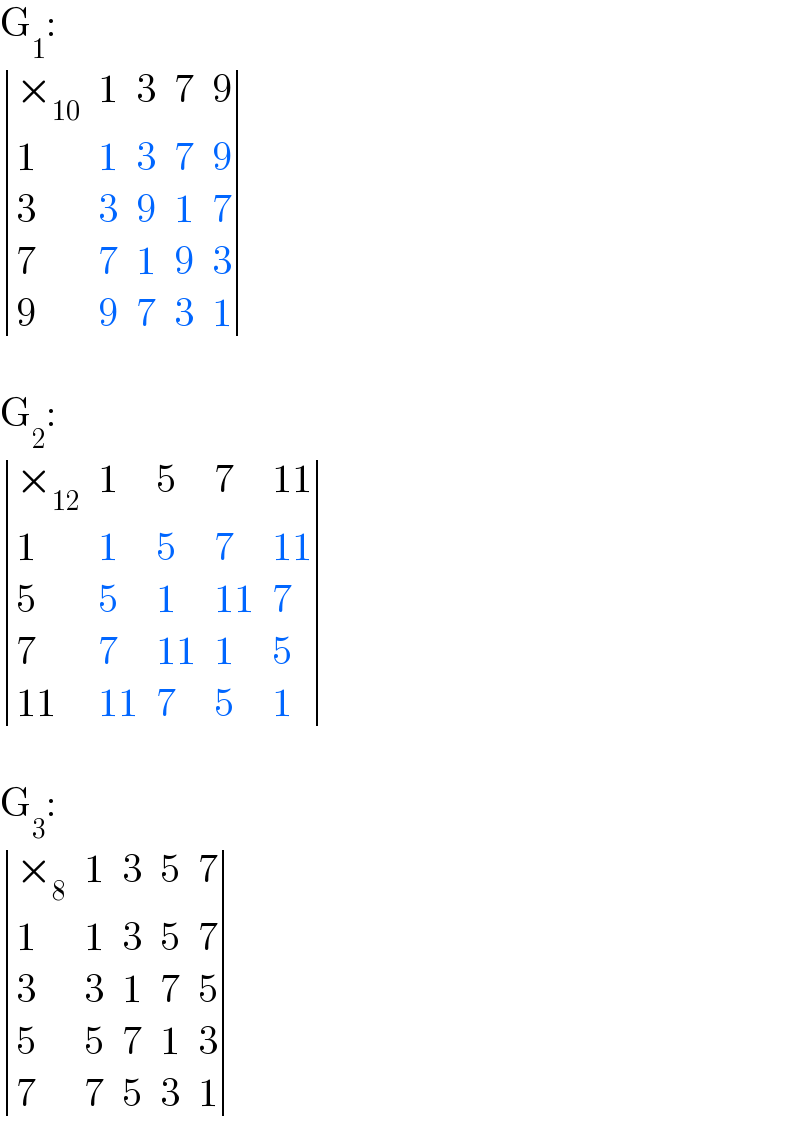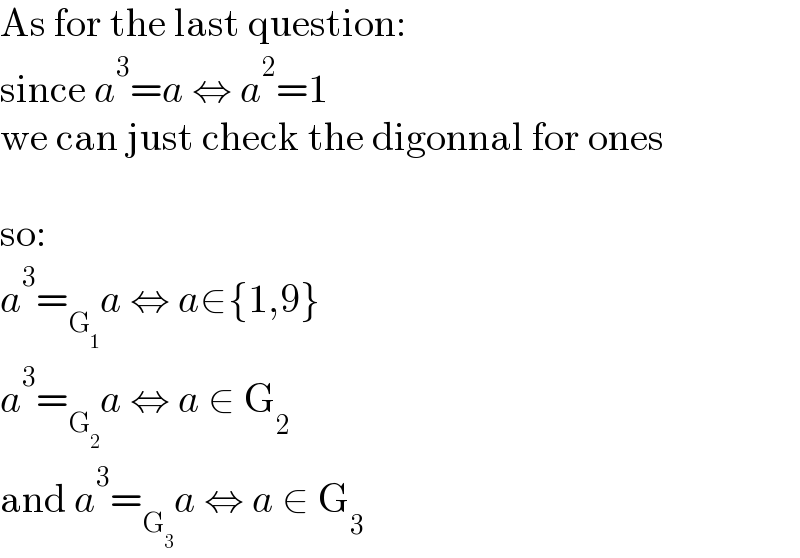
Question and Answers Forum
Question Number 158143 by alcohol last updated on 31/Oct/21

Commented by TheHoneyCat last updated on 31/Oct/21
![G_3 and G_2 are clearly isomorphical buy looking at their respectiv tables. we just need to map as follow: { (1,⇆,1),(5,⇆,3),(7,⇆,5),((11),⇆,7) :} G_1 cannot be isomorphic to either one because 3×_(10) 3=9≢1 [10] while ∀n∈{1,5,7,11} n×_(12) n=1 and ∀n∈{1,3,5,7} n×_8 n=1](Q158168.png)
Commented by TheHoneyCat last updated on 31/Oct/21

Commented by TheHoneyCat last updated on 31/Oct/21

Commented by TheHoneyCat last updated on 31/Oct/21
oups, I forgot to put the last one in blue...
Commented by phanphuoc last updated on 31/Oct/21

Commented by TheHoneyCat last updated on 31/Oct/21
it did say "∀x" but "∃a" so I just did not assume anything
Answered by TheHoneyCat last updated on 31/Oct/21

